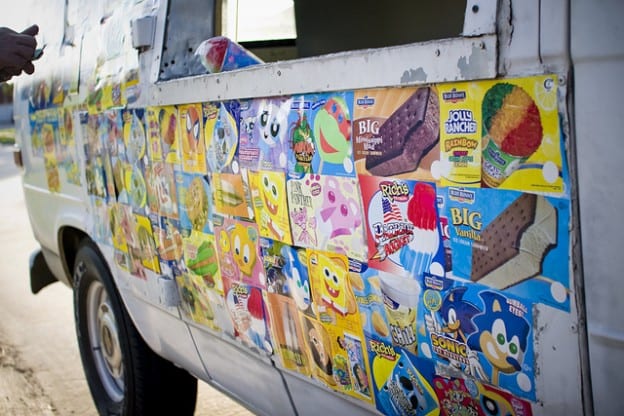During the 1960’s, except for the Sears Roebuck catalog, store shopping was about the only means for acquiring merchandise. Well, there was the ice cream truck and Farmer Brown who sold their products through the neighborhood. But, they only came through on Saturday, ringing a bell or playing a calliope song like the piped piper. Customers wanted to feel the product to help gauge its quality.
Today, we go online in seconds (without trying to find a parking space). We can go directly to the item we are seeking (without getting lost or having to find a sales clerk for directions). Up-selling is done without pressure (“People who bought this item also bought…”). And, if the item fails to please, we simply put it back in the package, slap a pre-printed label on it, and put it out front for the postal or UPS person to pick up. There’s no returns clerk to cross-examine us about the missing original receipt. And, the in-store versus online competition is daily being fought with such formidable foes as Amazon.com and Zappos.com.
Why would anyone ever go back into a store with such online convenience?
Some retailers have countered by offering their merchandise online. But, stores don’t need to throw in the towel. Online shopping does not let you enjoy the tactile side of service. In-store service can give you an experience that can take your breath away in a fashion online cannot achieve. The face-to-face warmth of the super-helpful clerk, the smell of the perfume counter, the opportunity for a tactile connection with the product, are all features completely missing from the online buying experience.
We don’t remember clicks. The online buying experience is typically designed to be a largely forgotten experience. An Amazon or Zappo’s purchase experience might become a story to share if there is a problem or an exception, but their goal is to create an experience you do not remember.
So, what’s wrong with that? Nothing–as long as your organization is leading the pack. The principle is the same for any enterprise—online or brick-and-mortar. Let the playing field get close to being even and customers begin to search for ways to differentiate one option from another. What’s the biggest difference between Delta and American, Cabalas and Bass Pro Shops, Costco and Sam’s, Hertz and Budget, or Marriott and Sheraton?
The service experience is the last venue for true differentiation. As customers, we don’t talk much to others about price and product these days. Unless price and product are very unique, they are simply the ticket to play. But, experience is an entirely different component of the customer’s definition of value. What is your customers’ buying memory beyond the parking, product and price? What steps can you take to make the tactile experience more valued than “point and click?”
